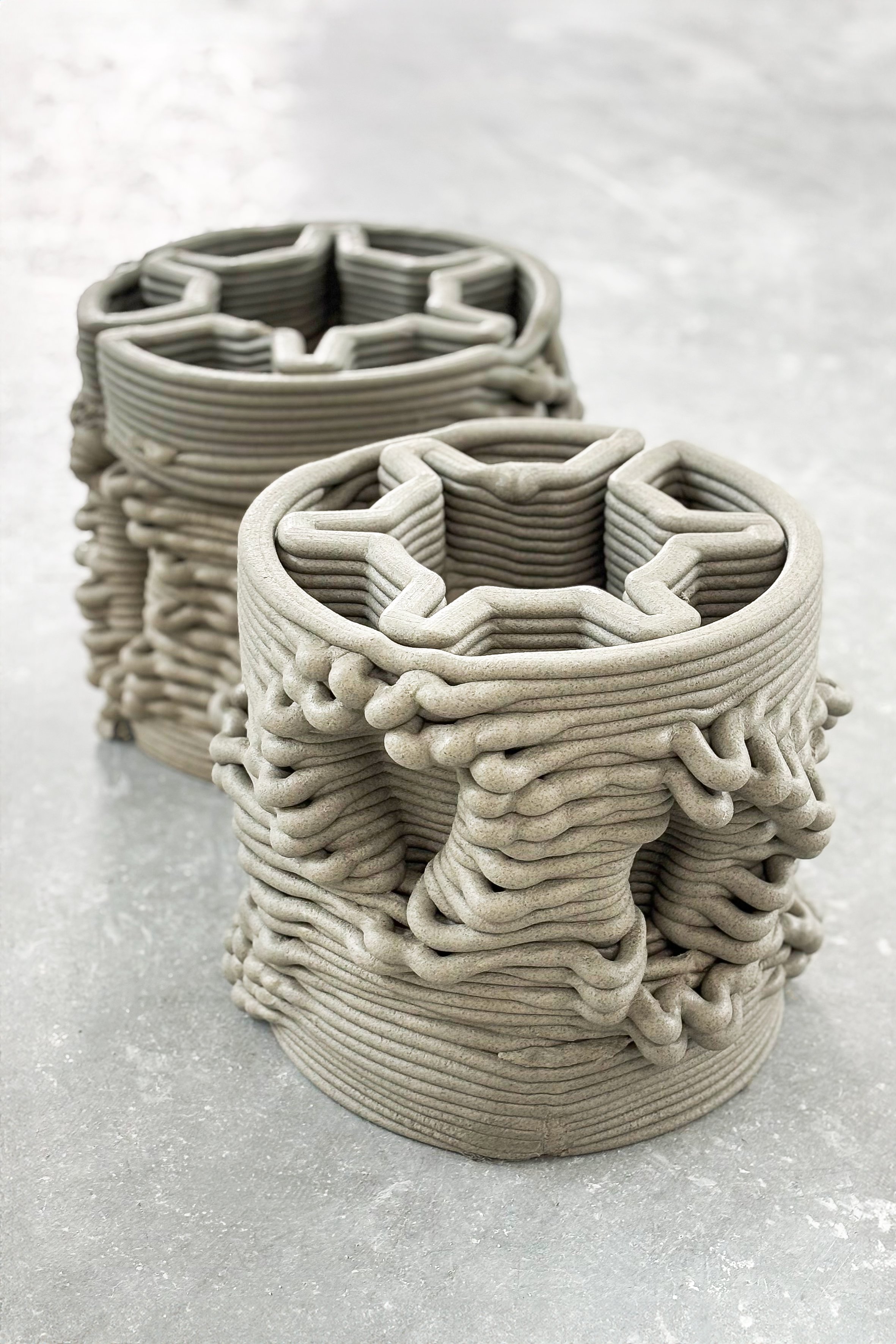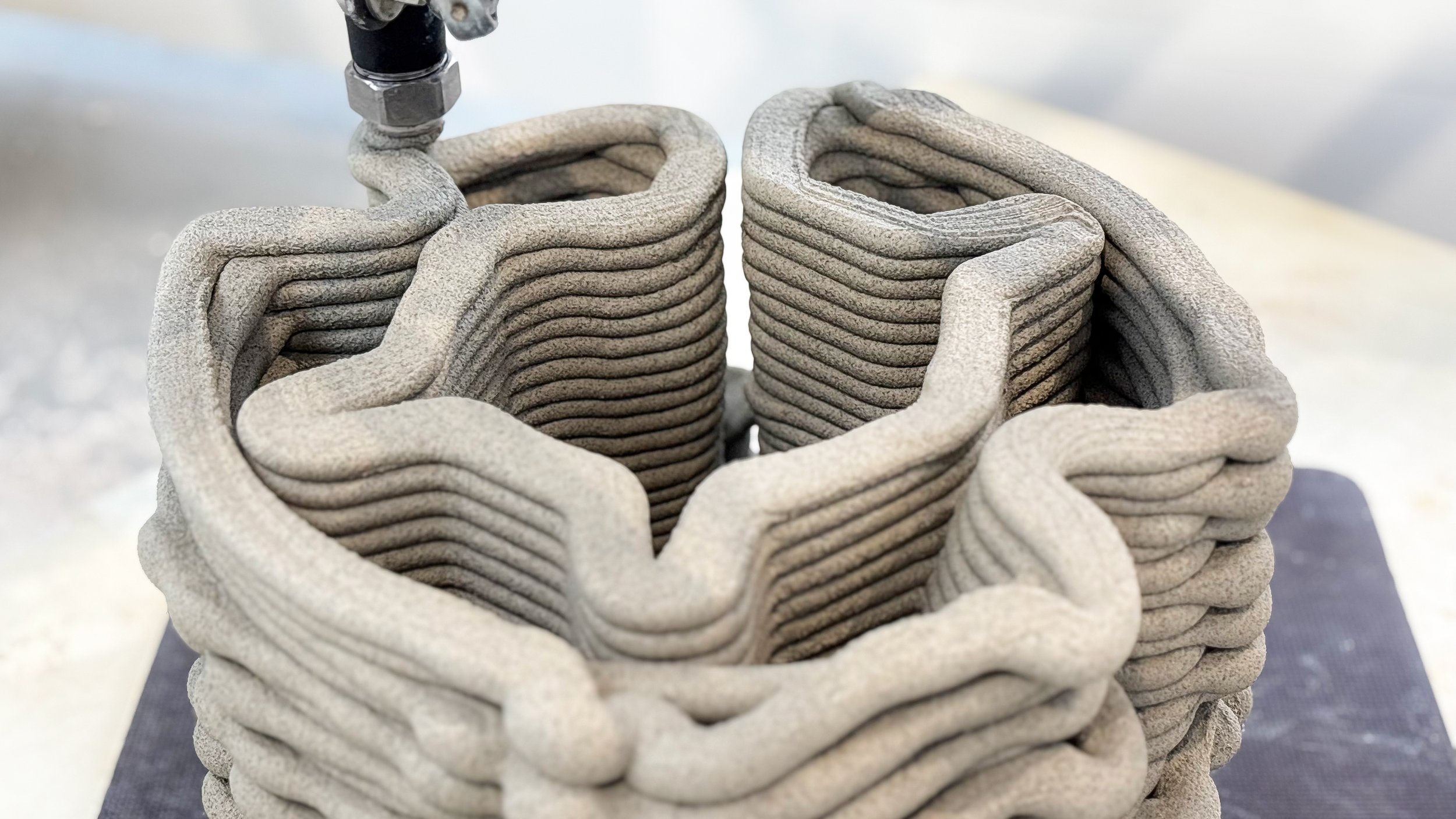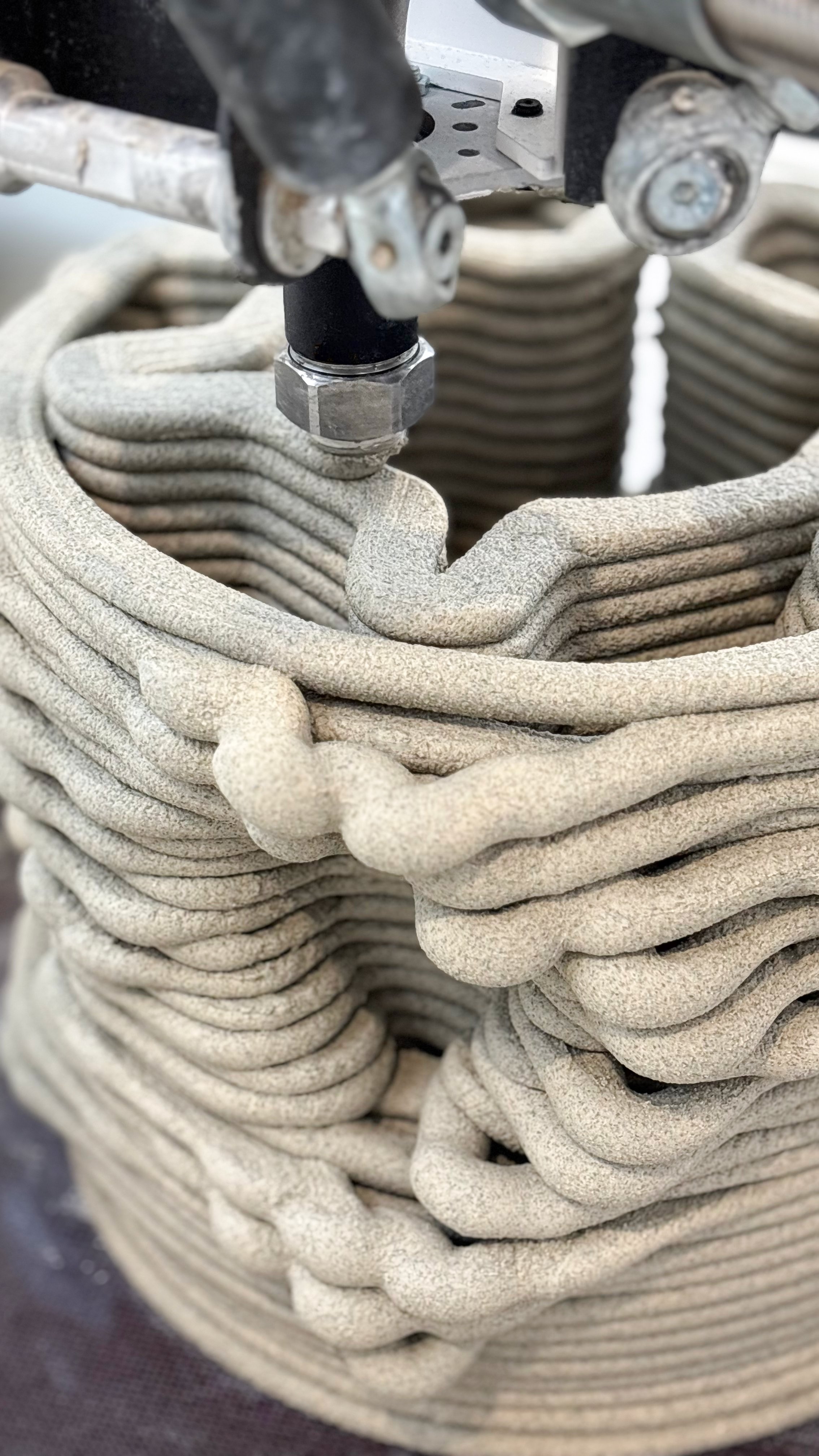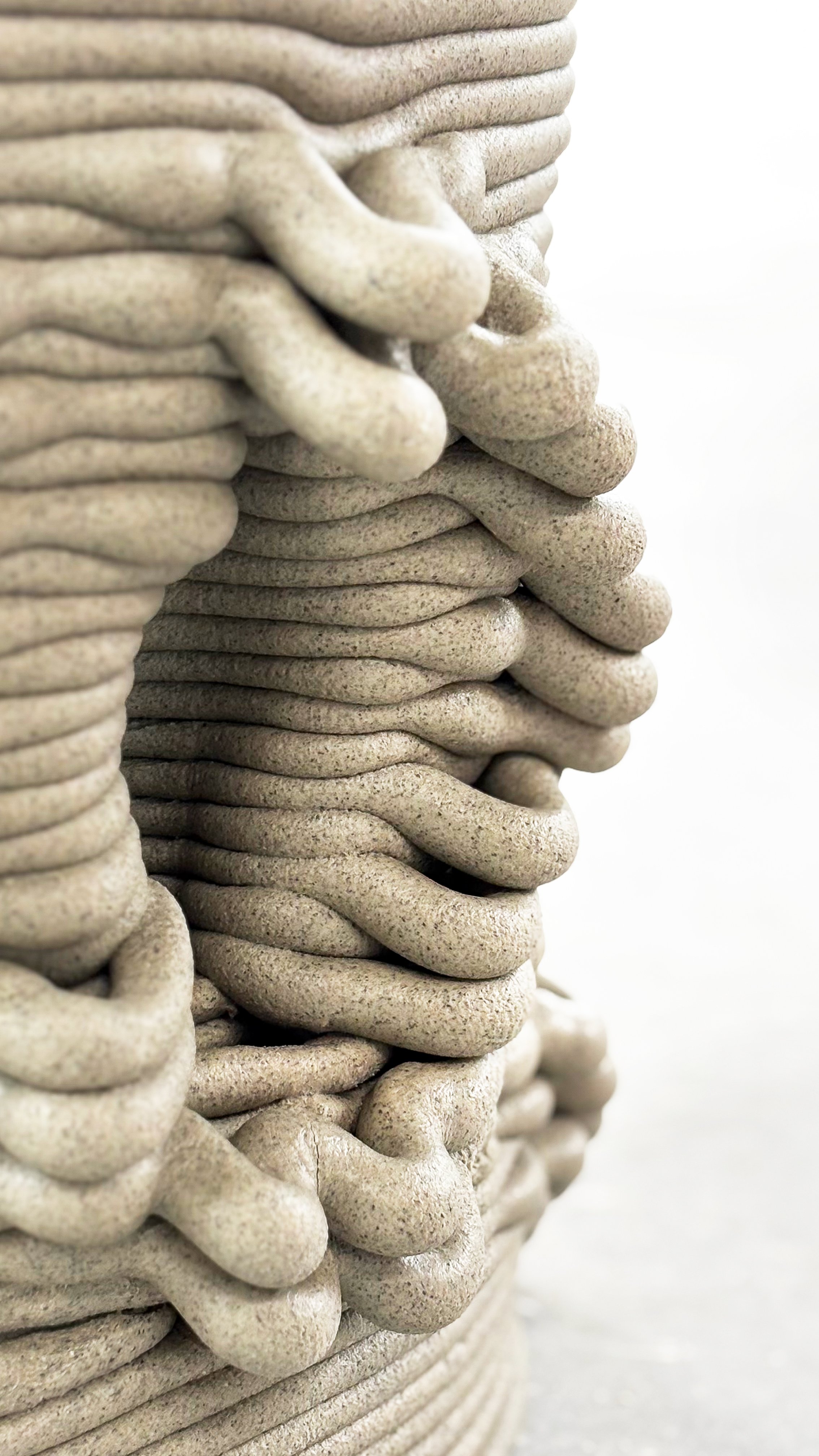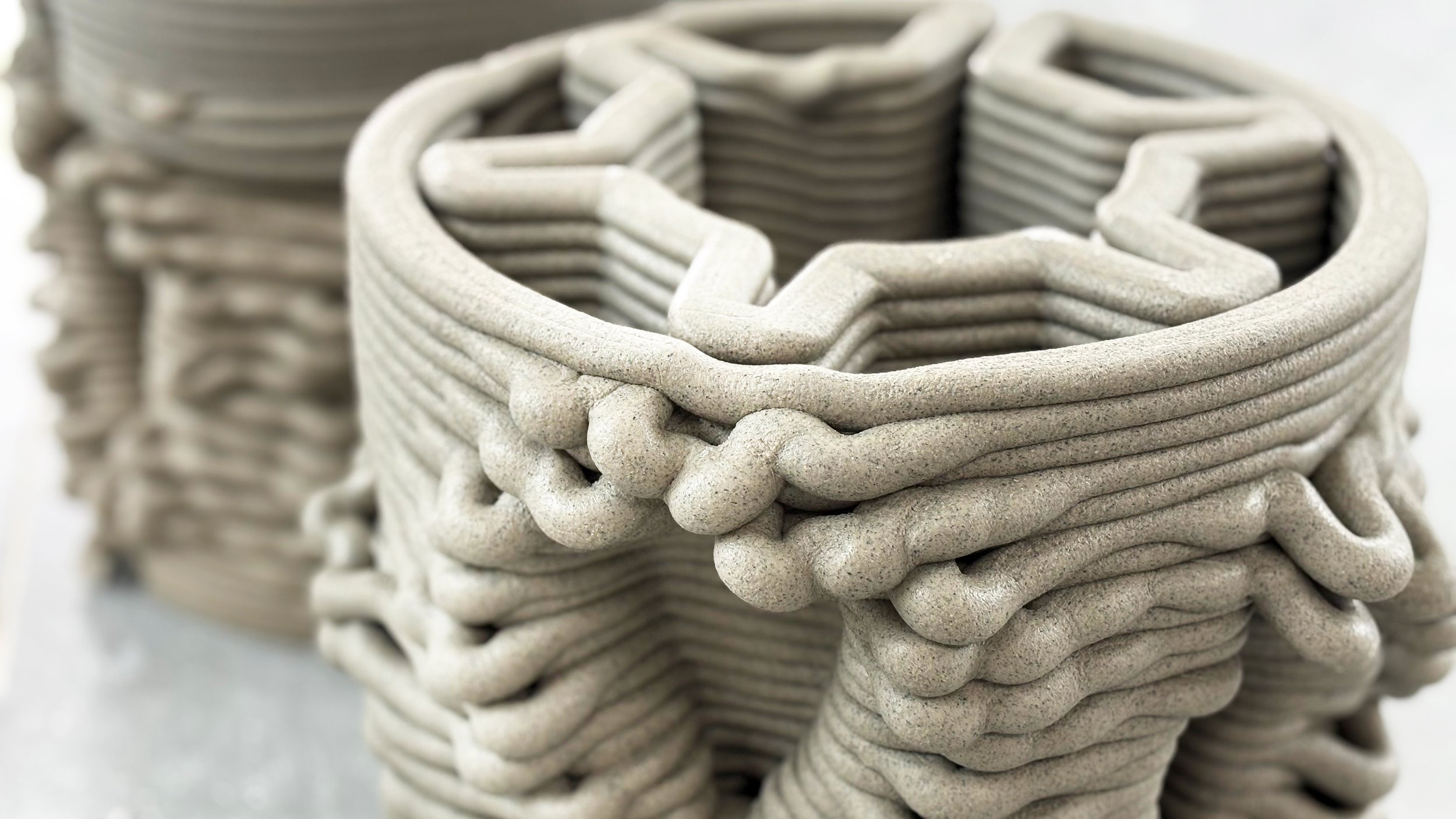
Geopolymers
3D Printing with Geopolymers
BE-AM 2024, FormNext, Frankfurter Messe
This research, also part of the series the Computational Column initially departed from the idea of a clay cladding system for structural steel columns. The clay cladding system is meant to accommodate plant growth in exterior spaces, as well as insects and small birds. This system thinking was extended and adapted to the use of geopolymers, where the the cladding is translated into self-interlocking column drums. Clay requires a double process of firing in order to achieve a high level of vitrification of the clay body, increasing strength and reducing porosity. This process is by its nature very energy intense and accompanied by challenges of shrinkage and warping of the clay body. In order to reduce this, other material systems were considered. Geoploymers were used to replace clay, as these are low-cost, environmentally friendly materials that do not require firing. Different classification systems exist for geopolymers depending on their composition. In a simplified manner, they describe a class of materials whose material behaviour lies between clay and concrete, and are often explored as a more sustainable replacement for Portland cement due to its significantly lower CO2 emissions.
For this research we collaborated with the company WASP on the 3D printing with geopolymer. WASP was also involved in the adaptation of the material mix to fit the geometric requirements and the robotic setup for additive manufacturing.
Team: Nikolett Ásványi, Mattia Zucco, Cristina Nan,
Eindhoven University of Technology
3D Printing: WASP Italy
Exhibited at BE-AM 2024, FormNext, Frankfurter Messe
